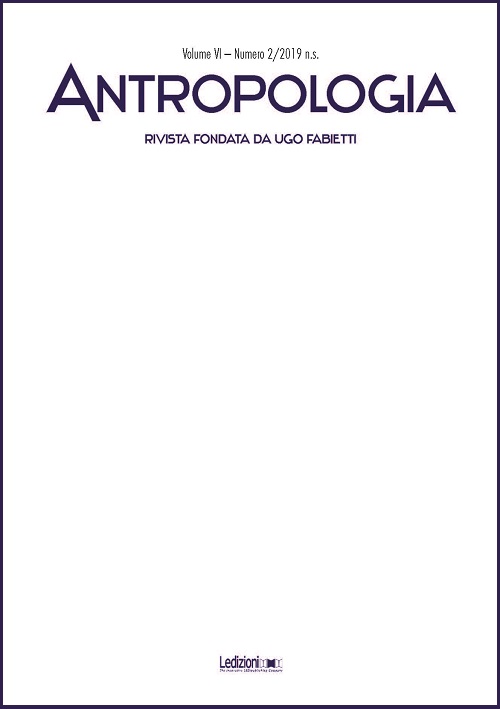What Is Kinning All About?
DOI:
https://doi.org/10.14672/ada201915757-12Parole chiave:
kinning, family, parenthood , reproductive health, kinshipAbstract
The EASA2016 Conference “Anthropological Legacies and Human Futures”, held at the University of Milan Bicocca in 2016, invited scholars to reflect on the legacy of anthropological studies “dealing with new forms of livelihoods, symbolic practices and material conditions”. We examined fundamental issues within the anthropology of kinship, and questioned traditional theories, concepts and legacies related to this field. We aimed to reconsider the very notion of kinning (Howell 2006) setting it against the concept of de-kinning (Fonseca 2011); we therefore organized a panel on “Kinning and De-kinning: Kinship practices between ‘parental figures’, ‘reproductive collaborators’ and children in new family configurations”. The fruitful discussions we had in those very hot summer days in Milan have continued in subsequent years, and we are now building on these reflections in collaboration with some of the panel participants, as well as new colleagues who have joined us since 2016.We approach kinship by examining ethnographic case studies “at the edge of kinship”, where there is “no template as to what the relationship is supposed to be” (Berend, Guerzoni this issue). The development of ARTs (Assisted Reproductive Technologies), combined with social and juridical changes within family structures, have reinvented child production, family reproduction and kinship practices. Contemporary forms of reproduction, family and parenthood (including increasingly complex networks of parental figures and progenitors – biological parents, adoptive parents, donors, birthmothers, surrogates, and social parents) offer new insights to the anthropological study of kinship.
##submission.downloads##
Pubblicato
2019-10-10
Fascicolo
Sezione
Special Focus. Kinning and De-Kinning: Rethinking Kinship and Relatedness from its Edges
Licenza
Copyright (c) 2019 Antropologia

TQuesto lavoro è fornito con la licenza Creative Commons Attribuzione 4.0 Internazionale.
- Gli autori mantengono i diritti sulla loro opera e cedono alla rivista il diritto di prima pubblicazione dell'opera, licenziata sotto una Licenza Creative Commons - Attribuzione che permette ad altri di condividere l'opera indicando la paternità intellettuale e la prima pubblicazione su questa rivista.
- Gli autori possono aderire ad altri accordi di licenza non esclusiva per la distribuzione della versione dell'opera pubblicata (es. depositarla in un archivio istituzionale o pubblicarla in una monografia), a patto di indicare che la prima pubblicazione è avvenuta su questa rivista.




